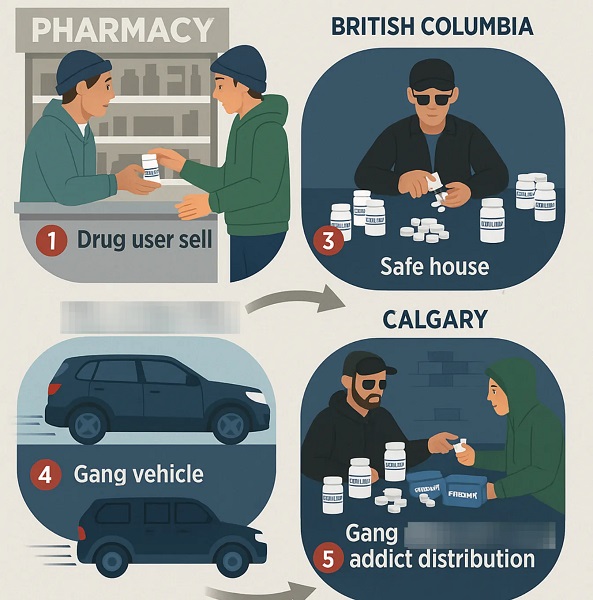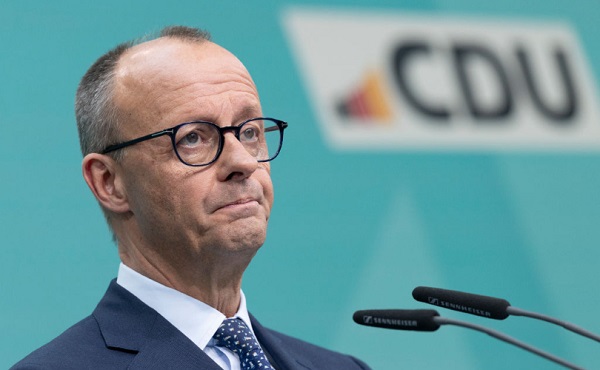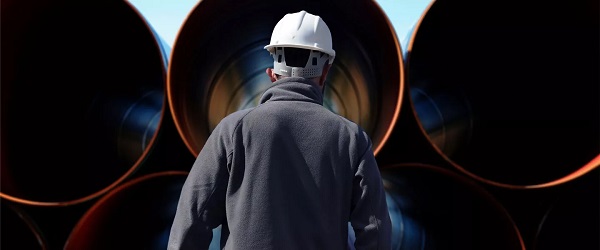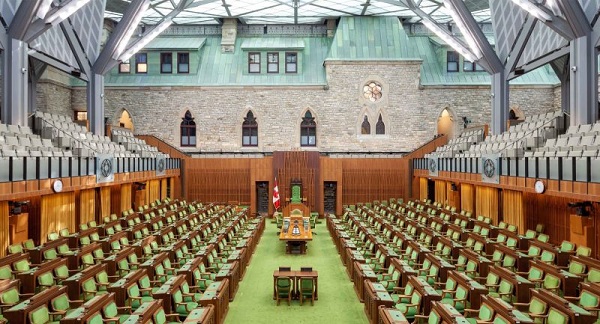Business
Governments must work to improve Canadian living standards despite recent good news

From the Fraser Institute
By Jake Fuss and Grady Munro
For years, Canadians have experienced a decline in living standards. According to new data from Statistics Canada, living standards may finally be headed back in the right direction, but there’s still much work to be done.
The new numbers show that inflation-adjusted gross domestic product (GDP)—the final value of all goods and services produced in the economy—grew by 0.5 per cent during the first three months of 2025. During that same period, population growth slowed considerably to just 0.2 per cent. For perspective, the average quarterly population growth last year was three times this rate at 0.6 per cent. As a result, inflation-adjusted per-person GDP—a broad measure of individual living standards—grew by 0.4 per cent to reach $59,146 at the end of March 2025.
This is a good sign as it marks the first time living standards have improved for two consecutive quarters (per-person GDP grew 0.1 per cent to end 2024) since the first half of 2022, but we must temper our optimism. Economic growth remains relatively weak compared to historical numbers. And a per-person GDP of $59,146 is still 2.6 per cent below the mid-2022 level ($60,718). For comparison, per-person GDP in the United States after the first three months of 2025 is 4.9 per cent higher than in mid-2022.
Simply put, Canadian living standards remain well below levels they’ve been in past years and growth has fallen well behind growth south of the border, meaning governments across Canada must take steps to promote economic growth.
Recently, there has been a push in Canada to eliminate interprovincial trade barriers, which inhibit the free flow of goods and services between provinces and act as a drag on the economy. Several provinces have already taken steps towards this end, and the federal government has committed to eliminate all federally-imposed trade barriers by Canada Day. These efforts are long overdue, and should be joined by all governments across the country.
Governments should also get their finances in order and finally stop adding to the mountain of debt. In 2025/26, nine out of 10 provinces (except Saskatchewan) and the federal government plan to run budget deficits—meaning they will spend more money than they collect in revenues and thus must borrow additional funds. Consequently, government debt will continue to rise.
Rising government debt acts as a drag on the economy. Indeed, research suggests that when combined federal and provincial government debt exceeds the entire size of the economy (as it did in seven out of 10 provinces in 2022) additional debt offers little benefit to economic growth, and instead inhibits growth in the economy. As such, governments across the country must lower spending to balance their budgets and chip away at this mountain of debt.
Finally, governments should also pursue comprehensive tax reforms to lower the tax burden and make Canada more attractive to professionals, businessowners and entrepreneurs, while also improving the economic incentives to work, save and invest. Without meaningful reform, Canada’s tax system will continue to inhibit economic growth and, consequently, living standards.
New economic data suggest that Canadian living standards have improved in recent months, but we must temper our optimism. Governments across the country should pursue meaningful policy reforms to help grow the economy and improve prosperity.
Automotive
Canada’s EV house of cards is close to collapsing

 By Dan McTeague
By Dan McTeague
Well, Canada’s electric vehicle policies are playing out exactly as I predicted. Which is to say, they’re a disaster.
Back in November, in the immediate aftermath of Donald Trump’s re-election, I wrote in these pages that, whatever else that election might mean for Canada, it would prove big trouble for the Justin Trudeau/Doug Ford EV scam.
The substance of their plot works like so: first, the federal and provincial governments threw mountains of taxpayer dollars in subsidies at automakers so that they’d come to Canada to manufacture EVs. Then Ottawa mandated that Canadians must buy those EVs — exclusively — by the year 2035. That way Ford and Trudeau could pat themselves on the back for “creating jobs,” while EV manufacturers could help themselves to the contents of our wallets twice over.
But the one variable they didn’t account for was a return of Donald Trump to the White House.
Trump had run on a promise to save America from their own back-door EV mandates. Though Kamala Harris had denied that any such mandates existed, they did, and they were founded on two acts of the Biden-Harris administration.
First, they issued an Executive Order setting significantly more onerous tailpipe regulations on all internal combustion engine (ICE) vehicles, with the explicit goal of ensuring that 50 percent of all new vehicles sold in America be electric by 2030.
Second, they granted California a waiver to make those regulations more burdensome still, so that only EVs could realistically be in compliance with them. Since no automaker would want to be locked out of the market of the most populous state, nor could they afford to build one set of cars for California (plus the handful of states which have — idiotically — chosen to align their regulations with California’s) and another set for the rest of the country, they would be forced to increase their manufacture and sale of EVs and decrease their output of ICE vehicles.
Trump’s victory took Canada’s political class completely by surprise, and it threw a spanner into the workings of the Liberals’ plan.
That’s because there just aren’t enough Canadians, or Canadian tax dollars, to make their EV scheme even kinda’ work. Canada’s unique access to the world’s biggest market — America — was a key component of the plan.
After all, vehicles are “the second largest Canadian export by value, at $51 billion in 2023, of which 93 percent was exported to the US,” according to the Canadian Vehicle Manufacturers Association, and “Auto is Ontario’s top export at 28.9 percent of all exports (2023.)”
It further depended on Americans buying more and more EVs every year. But since, when given a choice, most people prefer the cost and convenience of ICE vehicles, this would only work if Americans were pushed into buying EVs, even if in a more roundabout way than they’re being forced on Canadians.
Which is why the plan all began to unravel on January 20, the day of Trump’s inauguration, when he signed Executive Order 14154, “Unleashing American Energy,” which, among other things, rescinded Joe Biden’s pro-EV tailpipe regulations. And it has continued downhill from there.
Just last week, the US Senate voted to repeal the Biden EPA’s waiver for California. Not that that’s the end of the story — in the aftermath of the vote, California governor Gavin Newsom vowed “to fight this unconstitutional attack on California in court.” (Though don’t be surprised if that fight is brief and half-hearted — Newsom has been trying to leave his lifelong leftism behind recently and rebrand as a moderate Democrat in time for his own run at the White House in 2028. Consequently, being saved from his own EV policy might only help his career prospects going forward.)
But it’s worth noting the language used by the Alliance for Automotive Innovation, which represents car companies like Toyota, GM, Volkswagen and Stellantis (several of whom, it should be noted, have received significant subsidies from the Liberal and Ford governments to manufacture EVs), which said in a statement, “The fact is these EV sales mandates were never achievable.”
That’s worth repeating: these EV sales mandates were never achievable!
That’s true in California, and it’s true in Canada as well.
And yet, our political class has refused to accept this reality. Doug Ford actually doubled down on his commitment to heavily subsidizing the EV industry in his recent campaign, saying “I want to make it clear… a re-elected PC government will honour our commitment to invest in the sector,” no matter what Donald Trump does.
Except, as noted above, Donald Trump represents the customers Doug Ford needs!
Meanwhile, our environmentalist-in-chief, Mark Carney, has maintained the Liberal Party’s commitment to the EV mandates, arguing that EVs are essential for his vacuous plan of transforming Canada into a “clean energy superpower.” How exactly? That’s never said.
These are the words of con artists, not men who we should be trusting with the financial wellbeing of our country. Unfortunately, in our recent federal election — and the one in Ontario — this issue was barely discussed, beyond an 11th-hour attempted buzzer-beater from Pierre Poilievre and a feeble talking point from Bonnie Crombie about her concern “that the premier has put all our eggs in the EV basket.”
Meanwhile, 2035 is just around the corner.
So we can’t stop calling attention to this issue. In fact, we’re going to shout about our mindless EV subsidies and mandates from the rooftops until our fellow Canadians wake up to the predicament we’re in. It took some time, but we made them notice the carbon tax (even if the policy change we got from Carbon Tax Carney wasn’t any better.) And we can do it with electric vehicles, too.
Because we don’t have the money, either as a nation or as individuals, to prop this thing up forever.
Dan McTeague is President of Canadians for Affordable Energy.
Business
Patriotic Millionaires concept of tax ‘fairness’ ignores tax facts in Canada

From the Fraser Institute
By Jake Fuss and Tegan Hill
A group of wealthy Canadians called the “Patriotic Millionaires” recently asked governments in Canada to increase the amount of taxes they pay to “ensure greater fairness” in the system. In particular, the group is calling for a wealth tax and higher taxes on capital gains.
Unfortunately, the Patriotic Millionaires (whose motto is “Tax the rich!”) seem to misunderstand the current distribution of taxes paid by different income groups in Canada and the economic consequences of raising taxes.
The fixation on tax “fairness” (which the Patriotic Millionaires never actually define) is not new in Canada. It was a constant focus of the Trudeau government, which decided to increase “fairness” by increasing the top federal personal income tax rate from 29 per cent to 33 per cent in 2016 and proposing to raise taxes on capital gains in 2024.
These policies, like the Patriotic Millionaires, ignored basic facts about taxes. According to a recent study, the top 20 per cent of income-earning families in Canada paid 54.2 per cent of all federal, provincial and local taxes while earning less than half of the country’s total income (46.4 per cent). These families are the only income group in Canada that pay a larger share of taxes than their share of income.
In contrast, the remaining 80 per cent of Canadian families pay less in taxes than their share of total income. For example, the bottom 20 per cent of income-earning families pay 2.0 per cent of total taxes while earning 5.0 per cent of total income.
Why? Because Canada, like most advanced economies, has a progressive income tax system where government taxes individuals at increasingly higher rates as their income rises. For example, the marginal federal tax rate is 15 per cent on individual incomes up to $57,375 but more than double that rate (33 per cent) on income that exceeds $253,414.
According to the Patriotic Millionaires, Canada needs a “wealth tax,” which taxes a person’s net wealth. But time and time again, wealth taxes have failed to deliver the promised results of proponents. Eight European countries that experimented with wealth taxes have since abandoned them because they were expensive to administer, raised little revenue and imposed enormous costs on their economies. In particular, wealth taxes discourage investment, which is needed to broadly raise living standards and improve prosperity, by prompting people to move their assets away from productive investments (e.g. new businesses) to investments that may be exempt from the tax.
So, if Ottawa implemented a wealth tax, we’d likely see a reallocation of investment away from startups and towards housing (assuming housing remains exempt from the tax). Consequently, companies and investors would have less resources to invest in the technology, machinery and equipment that improve productivity, create jobs and drive higher living standards, particularly for average workers.
The Patriotic Millionaires also want to raise taxes on capital gains, which would have similar negative effects by making it more expensive for individuals and businesses to invest in Canada, leading to stagnant wages and living standards for Canadians.
The Patriotic Millionaires are misguided in their claims about “fairness” in the tax system. High-income earners already pay the majority of all taxes in Canada, and proportionality is one of the only objective measures of fairness with respect to the tax burden. Their policy proposals, if enacted by government, would only harm the economy rather than help it. That wouldn’t be fair to Canadian workers.
-
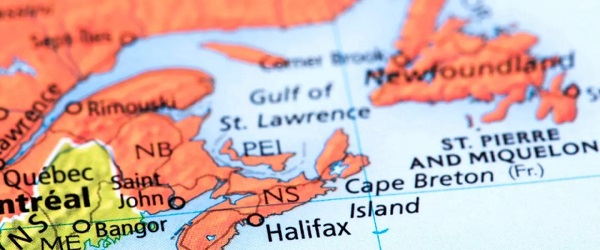
 Fraser Institute2 days ago
Fraser Institute2 days agoAtlantic provinces should focus on growth—despite Carney’s transfer policies
-
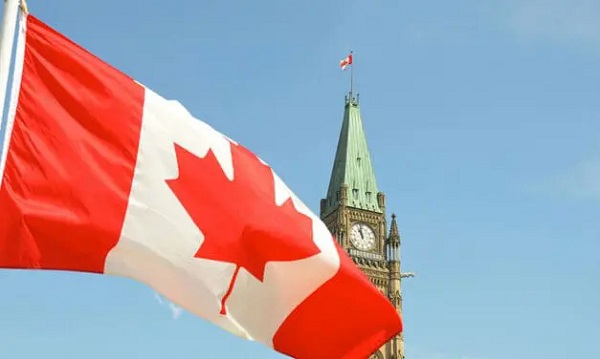
 Indigenous2 days ago
Indigenous2 days agoCarney’s Throne Speech lacked moral leadership
-

 Economy2 days ago
Economy2 days agoCanada Treats Energy As A Liability. The World Sees It As Power
-
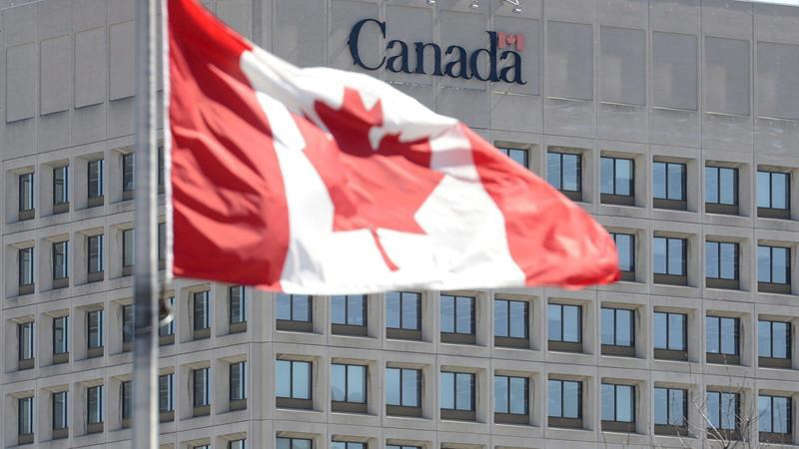
 Business2 days ago
Business2 days agoBureaucracy balloons while less than 50 per cent of government performance targets are consistently met
-

 conflict2 days ago
conflict2 days ago“Will Be in History Books”: Zelensky Hails Long-Range Drone Strike That Hit Dozens of Russian Bombers
-

 Addictions1 day ago
Addictions1 day agoSaskatchewan launches small fleet of wellness buses to expand addictions care
-

 Crime2 days ago
Crime2 days agoTerror in Boulder: Woman set on fire during pro-Israel hostage walk
-

 Bruce Dowbiggin1 day ago
Bruce Dowbiggin1 day agoNo Taxes, No Winter, No Worries: The Florida Formula For Winning?




